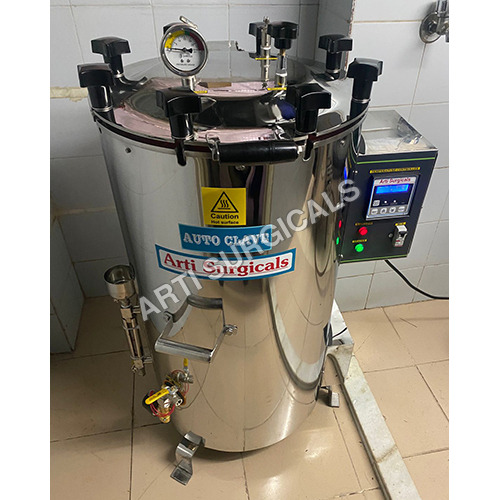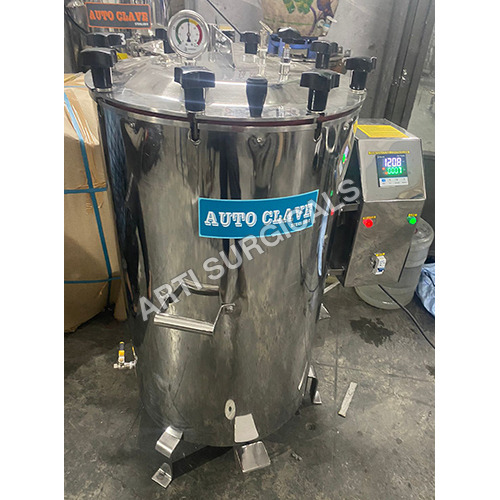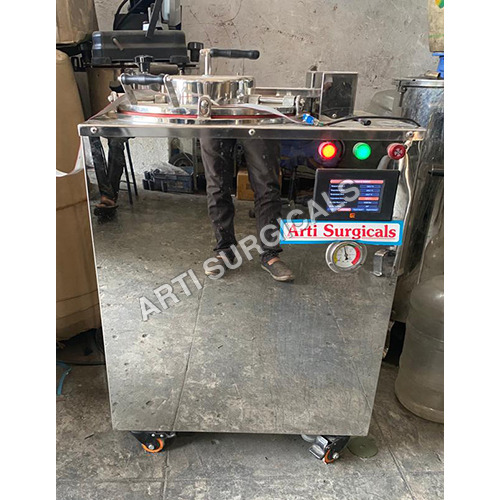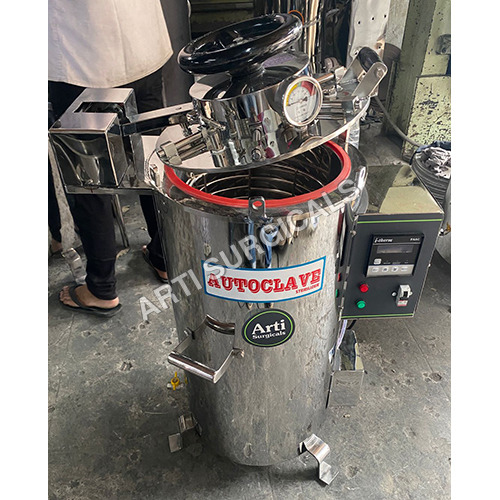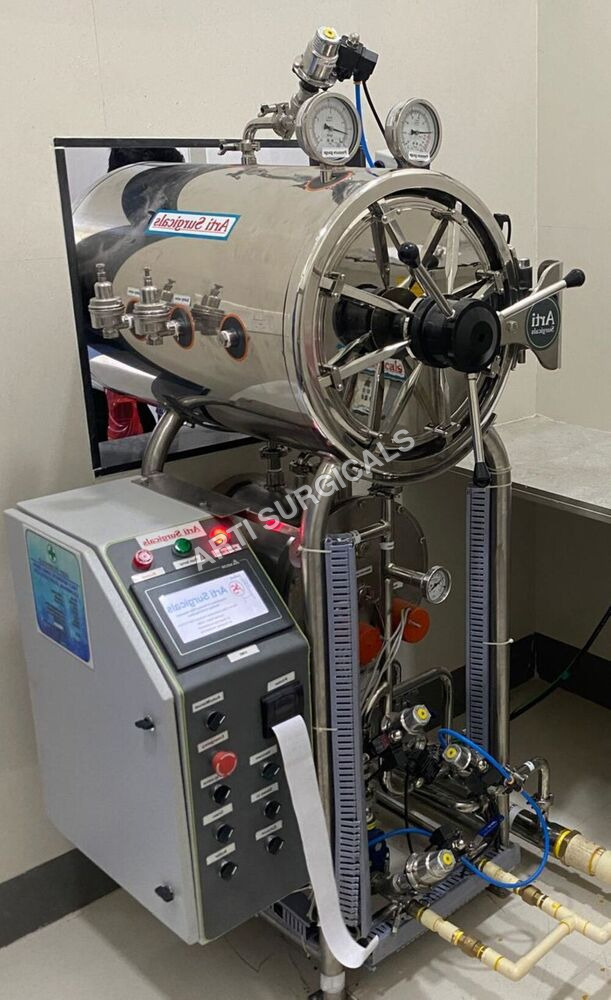
Fully Automatic Horizontal Cylindrical Autoclave
Product Details:
- Material Stainless Steel
- Usage Industrial
- Product Type Steel Autoclave
- Operate Method Semi Automatic
- Steam High
- Click to view more
Fully Automatic Horizontal Cylindrical Autoclave Price And Quantity
- 1 Unit
- 500000 INR/Unit
Fully Automatic Horizontal Cylindrical Autoclave Product Specifications
- Industrial
- Stainless Steel
- Semi Automatic
- Steel Autoclave
- High
Fully Automatic Horizontal Cylindrical Autoclave Trade Information
- 50 Unit Per Month
- 10 Days
- Asia, Australia, Central America, North America, South America, Eastern Europe, Western Europe, Middle East, Africa
- All India, Tripura, Odisha, Jammu and Kashmir, Telangana, Uttar Pradesh, Kerala, North India, Arunachal Pradesh, Delhi, Rajasthan, West Bengal, Sikkim, Chhattisgarh, Pondicherry, Daman and Diu, Goa, Nagaland, Mizoram, Maharashtra, Assam, East India, Jharkhand, Andhra Pradesh, South India, Central India, Manipur, Meghalaya, Madhya Pradesh, Gujarat, Bihar, Lakshadweep, Haryana, Dadra and Nagar Haveli, Karnataka, Andaman and Nicobar Islands, Punjab, Himachal Pradesh, Chandigarh, West India, , Uttarakhand, Tamil Nadu
Product Description
A fully automatic horizontal cylindrical autoclave is a type of sterilization equipment used primarily in hospitals, laboratories, and research facilities. It is designed to sterilize equipment, instruments, culture media, and waste materials using steam under high pressure and temperature. The horizontal cylindrical design allows for efficient loading and unloading, especially in larger capacity units, making it suitable for high-volume applications.
These autoclaves are equipped with advanced automatic controls, which streamline the operation process and ensure precise sterilization cycles. The automation features often include programmable controls, digital displays, safety interlocks, and automatic steam generation. This type of autoclave is ideal for consistent, high-standard sterilization in environments where reliability and efficiency are essential.
Key Features:
- Fully Automatic Control: Automated cycle management for convenience, ensuring consistent sterilization without manual intervention.
- Digital Display: Provides real-time monitoring of cycle parameters like temperature, pressure, and time.
- Horizontal Cylindrical Chamber: Efficient for loading large items, reducing human labor, and allowing uniform steam penetration.
- Safety Interlocks: Prevents operation errors, enhancing user safety by locking the door during sterilization.
- Programmable Cycles: Enables customized sterilization programs for different types of loads.
- High Capacity: Suitable for handling large volumes of materials and instruments.
- Durability: Made of stainless steel for longevity and corrosion resistance.
FAQs on Fully Automatic Horizontal Cylindrical Autoclave
1. What is a fully automatic horizontal cylindrical autoclave?
- It is a high-capacity sterilization machine designed for hospitals and laboratories that uses steam under high pressure and temperature to sterilize medical instruments, lab equipment, and waste. The machine is fully automated, meaning it requires minimal user intervention to run sterilization cycles.
2. How does it differ from a vertical autoclave?
- Unlike vertical autoclaves, which are loaded from the top, horizontal cylindrical autoclaves are loaded from the front. This configuration is more ergonomic for larger and heavier items, making it ideal for high-volume settings.
3. What are the automation features of this autoclave?
- Most fully automatic horizontal autoclaves come with programmable control panels, digital displays, cycle completion alerts, and safety interlocks. These features streamline the sterilization process and allow users to set specific parameters for different loads.
4. What is the ideal temperature and pressure for sterilization?
- The typical sterilization temperature is around 121C (250F) or 134C (273F), with pressures ranging from 15 to 30 psi, depending on the cycle requirements and materials being sterilized.
5. What safety features are included in these autoclaves?
- Safety features often include automatic door locks that engage during operation, over-pressure protection, temperature cut-offs, and alarms for any cycle irregularities to prevent accidental burns or other injuries.
6. How is maintenance managed for this type of autoclave?
- Regular maintenance is essential to ensure efficient operation. This includes checking seals, valves, and control systems. Many models have built-in alerts or maintenance reminders to help manage upkeep.
7. Is this autoclave energy-efficient?
- Yes, modern fully automatic horizontal cylindrical autoclaves are designed with energy-saving technologies, such as improved insulation and efficient steam generation, which minimize energy consumption.
8. Can it be used for sterilizing all types of materials?
- While its versatile, some materials, like certain plastics, may not withstand high temperatures and pressure. Its best to check material compatibility before sterilizing items in the autoclave.
9. What are the common applications of a fully automatic horizontal cylindrical autoclave?
- Common applications include sterilizing surgical instruments, medical waste, laboratory media, glassware, and biohazardous waste in medical, dental, veterinary, and research settings.
10. How long does a typical sterilization cycle take?
- The cycle time can vary depending on load size and type but generally ranges from 15 to 60 minutes. This includes the time required to reach the necessary temperature and pressure, hold it for sterilization, and cool down afterward.

Price:
- 50
- 100
- 200
- 250
- 500
- 1000+
 English
English Spanish
Spanish French
French German
German Italian
Italian Chinese (Simplified)
Chinese (Simplified) Japanese
Japanese Korean
Korean Arabic
Arabic Portuguese
Portuguese


